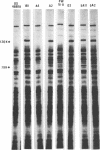Abstract
The ebg operon of Escherichia coli includes a second gene designated ebgB. The ebgB gene product is a 79,000-molecular-weight protein and is expressed coordinately with the ebgA gene product, ebg beta-galactosidase. Insertion of the transposable elements Tn5 and Tn9 into ebgA eliminates the expression of ebgB, suggesting that ebgB is distal to ebgA. Ultraviolet light mapping confirms that gene order. The function of the ebgB gene product is unknown.
Full text
PDF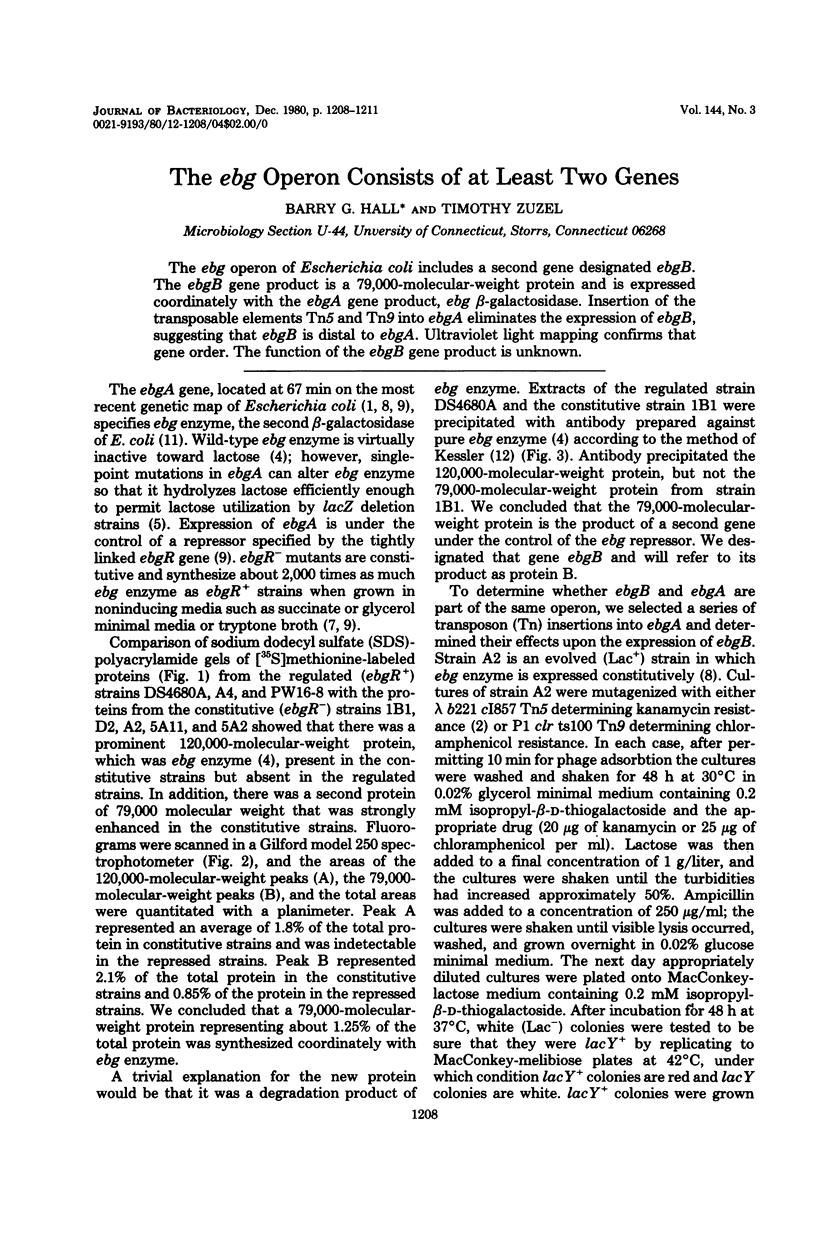
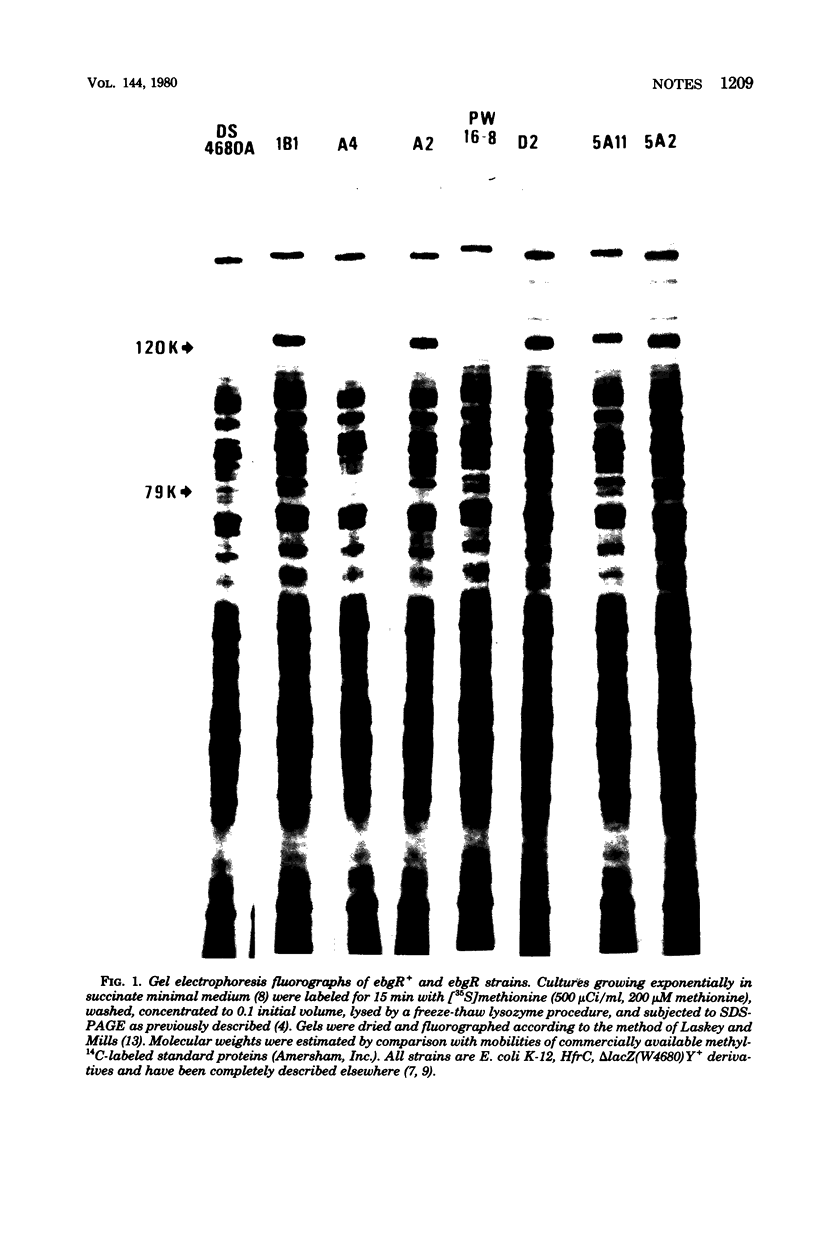
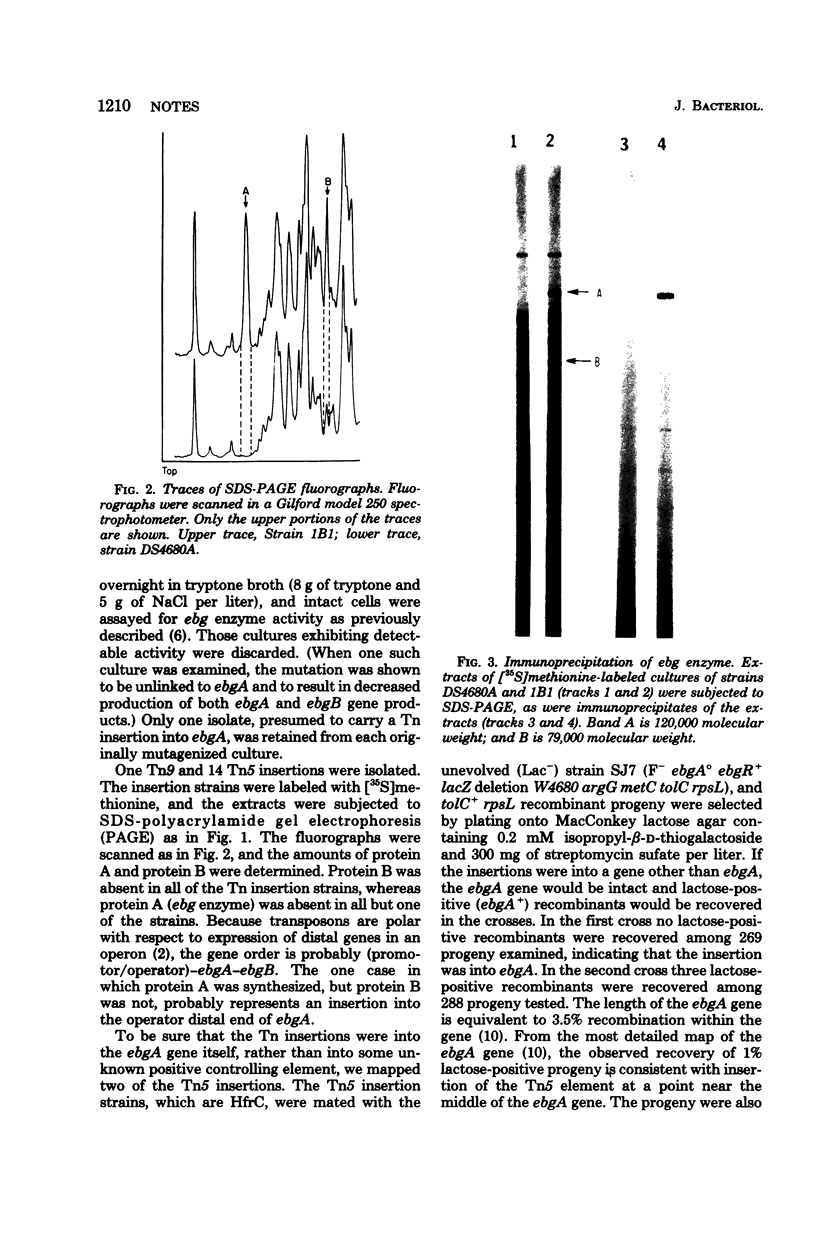
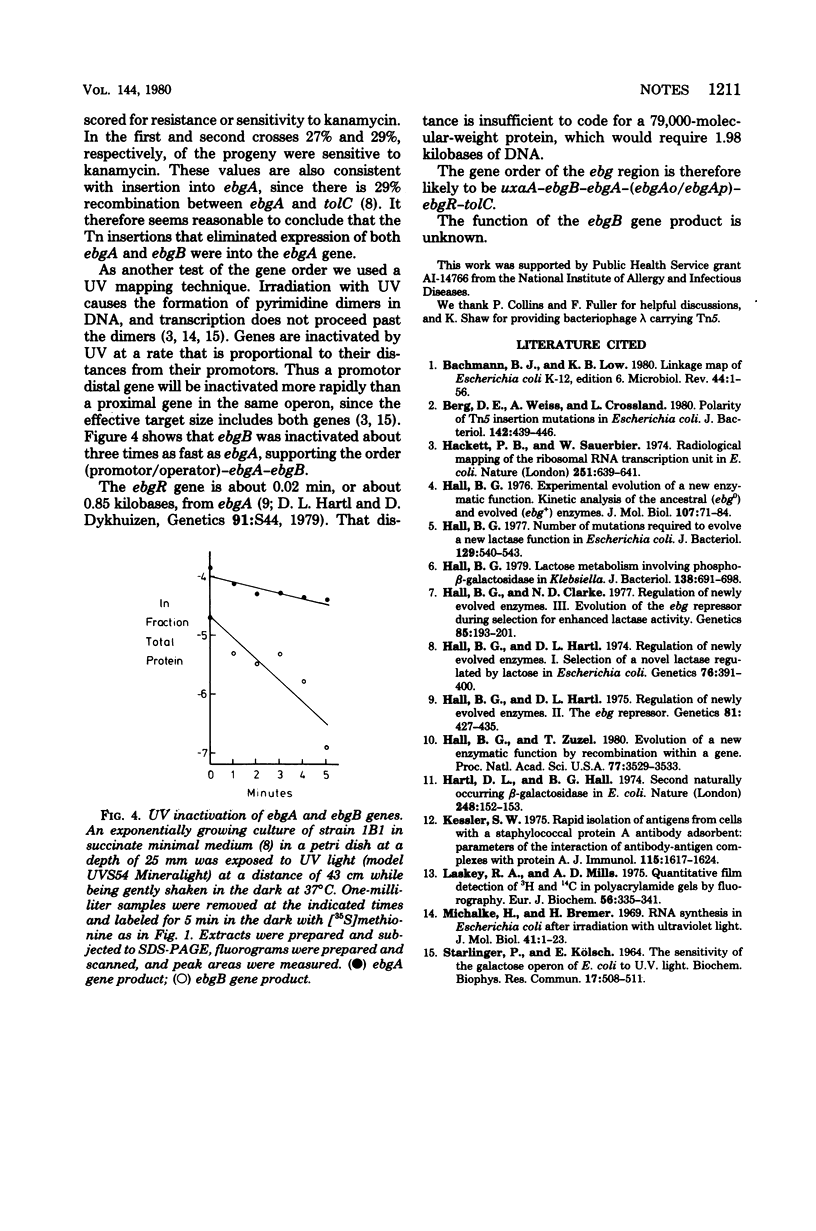
Images in this article
Selected References
These references are in PubMed. This may not be the complete list of references from this article.
- Bachmann B. J., Low K. B. Linkage map of Escherichia coli K-12, edition 6. Microbiol Rev. 1980 Mar;44(1):1–56. doi: 10.1128/mr.44.1.1-56.1980. [DOI] [PMC free article] [PubMed] [Google Scholar]
- Berg D. E., Weiss A., Crossland L. Polarity of Tn5 insertion mutations in Escherichia coli. J Bacteriol. 1980 May;142(2):439–446. doi: 10.1128/jb.142.2.439-446.1980. [DOI] [PMC free article] [PubMed] [Google Scholar]
- Gall B. G., Hartl D. L. Regulation of newly evolved enzymes. II. The ebg repressor. Genetics. 1975 Nov;81(3):427–435. doi: 10.1093/genetics/81.3.427. [DOI] [PMC free article] [PubMed] [Google Scholar]
- Hackett P. B., Sauerbier W. Radiological mapping of the ribosomal RNA transcription unit in E. coli. Nature. 1974 Oct 18;251(5476):639–641. doi: 10.1038/251639a0. [DOI] [PubMed] [Google Scholar]
- Hall B. G., Clarke N. D. Regulation of newly evolved enzymes. III Evolution of the ebg repressor during selection for enhanced lactase activity. Genetics. 1977 Feb;85(2):193–201. doi: 10.1093/genetics/85.2.193. [DOI] [PMC free article] [PubMed] [Google Scholar]
- Hall B. G. Experimental evolution of a new enzymatic function. Kinetic analysis of the ancestral (ebg) and evolved (ebg) enzymes. J Mol Biol. 1976 Oct 15;107(1):71–84. doi: 10.1016/s0022-2836(76)80018-6. [DOI] [PubMed] [Google Scholar]
- Hall B. G., Hartl D. L. Regulation of newly evolved enzymes. I. Selection of a novel lactase regulated by lactose in Escherichia coli. Genetics. 1974 Mar;76(3):391–400. doi: 10.1093/genetics/76.3.391. [DOI] [PMC free article] [PubMed] [Google Scholar]
- Hall B. G. Lactose metabolism involving phospho-beta-galactosidase in Klebsiella. J Bacteriol. 1979 Jun;138(3):691–698. doi: 10.1128/jb.138.3.691-698.1979. [DOI] [PMC free article] [PubMed] [Google Scholar]
- Hall B. G. Number of mutations required to evolve a new lactase function in Escherichia coli. J Bacteriol. 1977 Jan;129(1):540–543. doi: 10.1128/jb.129.1.540-543.1977. [DOI] [PMC free article] [PubMed] [Google Scholar]
- Hall B. G., Zuzel T. Evolution of a new enzymatic function by recombination within a gene. Proc Natl Acad Sci U S A. 1980 Jun;77(6):3529–3533. doi: 10.1073/pnas.77.6.3529. [DOI] [PMC free article] [PubMed] [Google Scholar]
- Hartl D. L., Hall B. G. Second naturally occurring beta-galactosidase in E. coli. Nature. 1974 Mar 8;248(5444):152–153. doi: 10.1038/248152a0. [DOI] [PubMed] [Google Scholar]
- Kessler S. W. Rapid isolation of antigens from cells with a staphylococcal protein A-antibody adsorbent: parameters of the interaction of antibody-antigen complexes with protein A. J Immunol. 1975 Dec;115(6):1617–1624. [PubMed] [Google Scholar]
- Laskey R. A., Mills A. D. Quantitative film detection of 3H and 14C in polyacrylamide gels by fluorography. Eur J Biochem. 1975 Aug 15;56(2):335–341. doi: 10.1111/j.1432-1033.1975.tb02238.x. [DOI] [PubMed] [Google Scholar]
- Michalke H., Bremer H. RNA synthesis in Escherichia coli after irradiation with ultraviolet light. J Mol Biol. 1969 Apr 14;41(1):1–23. doi: 10.1016/0022-2836(69)90122-3. [DOI] [PubMed] [Google Scholar]



